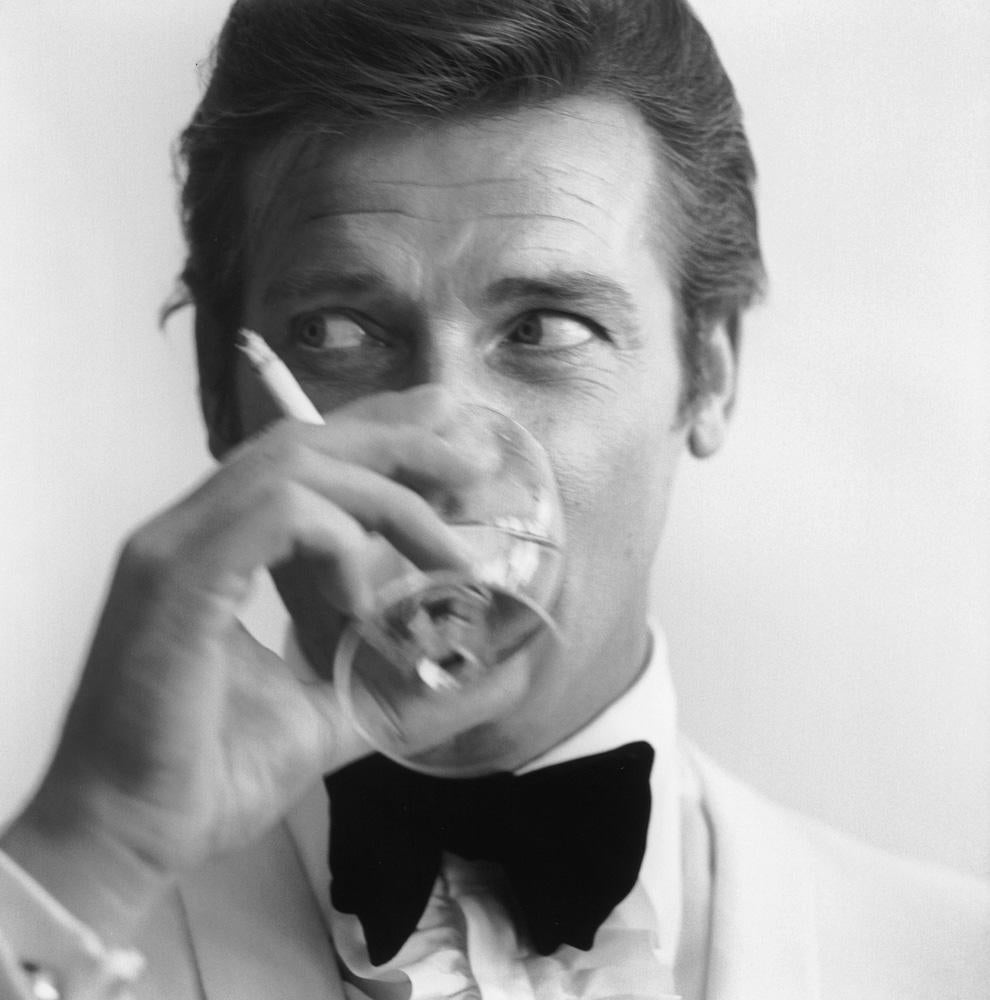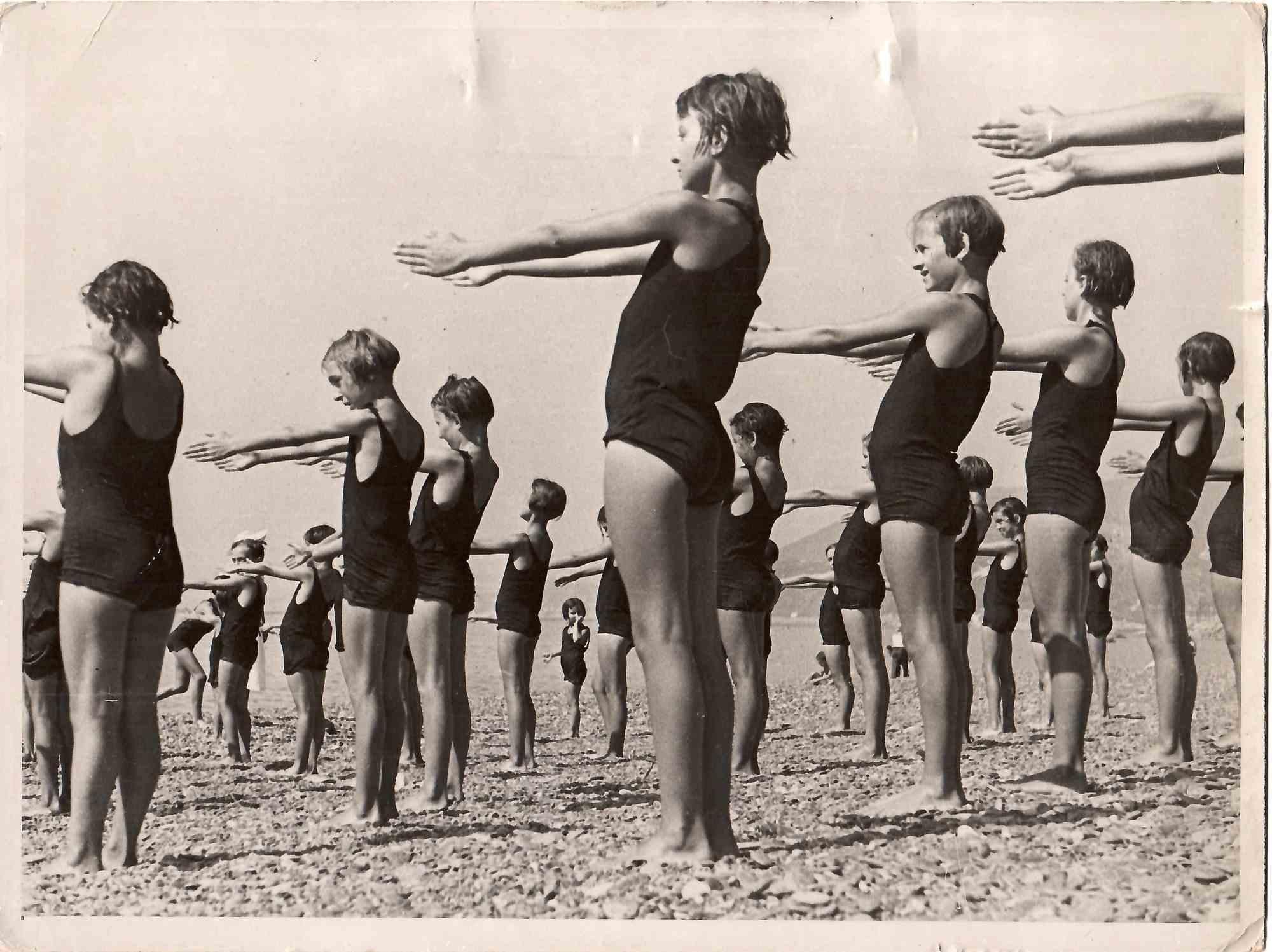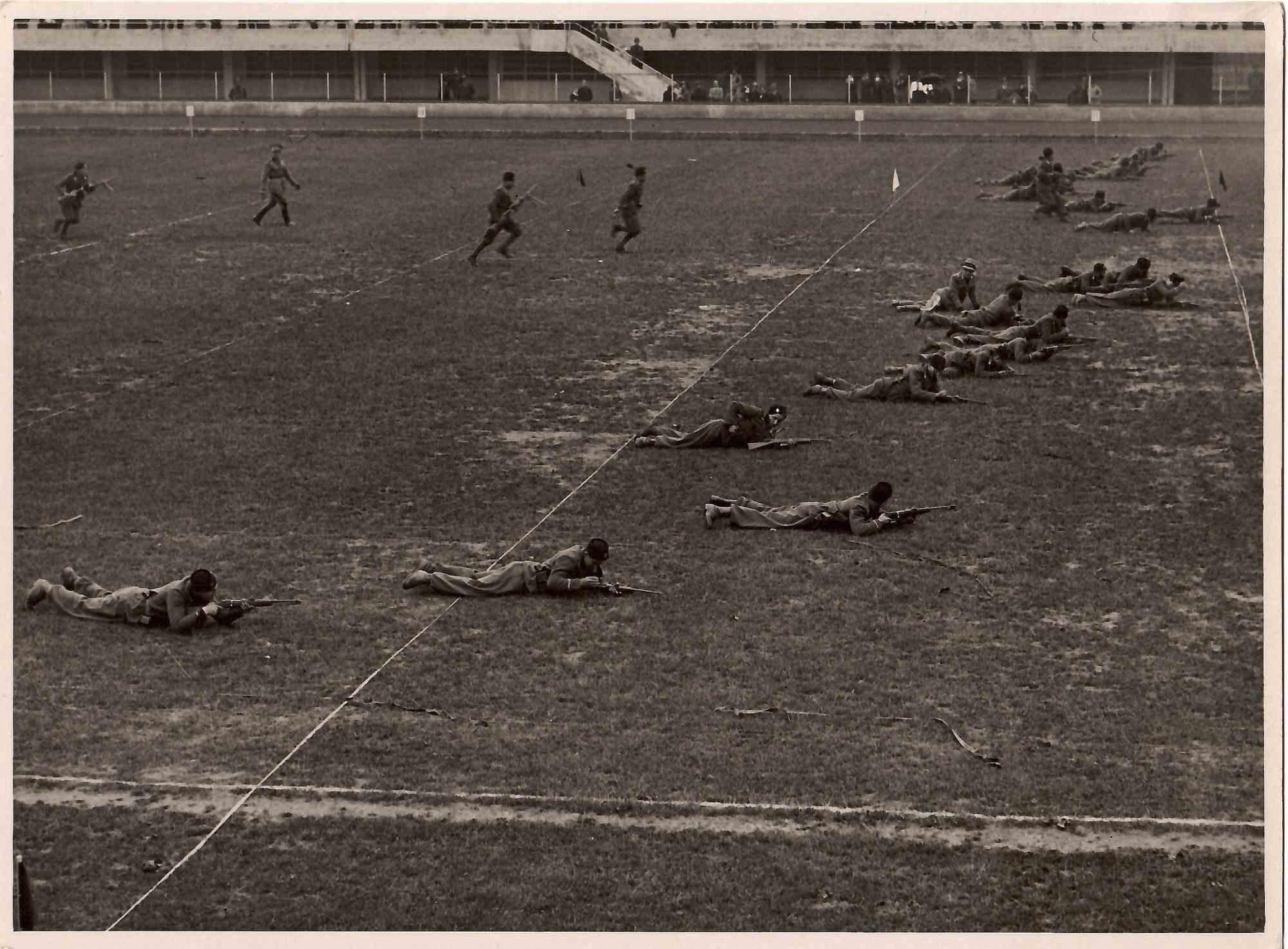Items Similar to German Jewish Weimar Era Silver Gelatin Photograph Pre War Judaica Costume Party
Want more images or videos?
Request additional images or videos from the seller
1 of 7
Arno Katz German Jewish Weimar Era Silver Gelatin Photograph Pre War Judaica Costume Party
About the Item
Rare German Judaica. Arno Katz Foto for Atelier Bermann, Frankfurt, Germany.
bears original stamp verso
The Weimar Republic (German: Weimarer Republik [ˈvaɪmaʁɐ ʁepuˈbliːk] (About this soundlisten)), officially the German Reich (Deutsches Reich), also referred to as the German People's State (Deutscher Volksstaat) or simply the German Republic (Deutsche Republik), was the German state from 1918 to 1933. As a term, it is an unofficial historical designation that derives its name from the city of Weimar, where its constituent assembly first took place. The official name of the republic remained the German Reich as it had been during the German Empire because of the German tradition of substates.
Although commonly translated as "German Empire," Reich here better translates as "realm" in that the term does not necessarily have monarchical connotations in itself. The Reich was changed from a constitutional monarchy into a republic. In English, the country was usually known simply as Germany, and the Weimar Republic name became mainstream only in the 1930s.
Germany became a de facto republic on 9 November 1918 when Kaiser Wilhelm II abdicated the German and Prussian thrones with no agreement made on a succession by his son Crown Prince Wilhelm; and became a de jure republic in February 1919 when the position of President of Germany was created. A national assembly was convened in Weimar, where a new constitution for Germany was written and adopted on 11 August 1919. In its fourteen years, the Weimar Republic faced numerous problems, including hyperinflation, political extremism (with contending paramilitaries) as well as contentious relationships with the victors of the First World War. Resentment in Germany towards the Treaty of Versailles was strong especially on the political right where there was great anger towards those who had signed and submitted to the treaty. The Weimar Republic fulfilled most of the requirements of the Treaty of Versailles although it never completely met its disarmament requirements and eventually paid only a small portion of the war reparations (by twice restructuring its debt through the Dawes Plan and the Young Plan).[7] Under the Locarno Treaties, Germany accepted the western borders of the country by abandoning irredentist claims on France and Belgium, but continued to dispute the eastern borders and sought to persuade Austria to rejoin Germany, which it had been during the German Confederation of 1815 to 1866.
From 1930 onwards, President Paul von Hindenburg used emergency powers to back Chancellors Heinrich Brüning, Franz von Papen and General Kurt von Schleicher. The Great Depression, exacerbated by Brüning's policy of deflation, led to a surge in unemployment.[8] In 1933, Hindenburg appointed Adolf Hitler as Chancellor with the Nazi Party being part of a coalition government. The Nazis held two out of the remaining ten cabinet seats. Von Papen as Vice Chancellor was intended to be the "éminence grise" who would keep Hitler under control, using his close personal connection to Hindenburg. Within months, the Reichstag Fire Decree and the Enabling Act of 1933 had brought about a state of emergency as it wiped out constitutional governance and civil liberties. Hitler's seizure of power (Machtergreifung) was permissive of government signed by decree without legislative participation. These events brought the republic to an end—as democracy collapsed, the founding of a single-party state began the dictatorship of the Nazi era.
- Creator:Arno Katz
- Dimensions:Height: 3 in (7.62 cm)Width: 5.5 in (13.97 cm)
- Medium:
- Movement & Style:
- Period:
- Condition:Minor edge discolouration. Please see photos.
- Gallery Location:Surfside, FL
- Reference Number:1stDibs: LU3826741702
About the Seller
4.9
Platinum Seller
These expertly vetted sellers are 1stDibs' most experienced sellers and are rated highest by our customers.
Established in 1995
1stDibs seller since 2014
1,568 sales on 1stDibs
Typical response time: 1 hour
- ShippingRetrieving quote...Ships From: Surfside, FL
- Return PolicyA return for this item may be initiated within 3 days of delivery.
More From This SellerView All
- Vintage Contact Sheet Jaffa, Tel Aviv circa 1940sLocated in Surfside, FLA rare British Mandate Palestine, early state of Israel era, Black and White photography contact sheet. these were from a photo collection that included Robert Capa and other Magnum photographers. I do not know who this is by. It has VW written on the back and each one has a Volkswagen Beatle car on it. it might be early advertising memorabilia...Category
1940s Modern Black and White Photography
MaterialsPhotographic Paper
- Architectural Study - InteriorBy Julius ShulmanLocated in Surfside, FLJulius Shulman (October 10, 1910 – July 15, 2009) was an American architectural photographer best known for his photograph "Case Study House #22, Los Angeles, 1960. Pierre Koenig...Category
20th Century Modern Black and White Photography
MaterialsPhotographic Paper
- Architectural Study - InteriorBy Julius ShulmanLocated in Surfside, FLJulius Shulman (October 10, 1910 – July 15, 2009) was an American architectural photographer best known for his photograph "Case Study House #22, Los Angeles, 1960. Pierre Koenig, Architect." The house is also known as the Stahl House. Shulman's photography spread California Mid-century modern around the world. Through his many books, exhibits and personal appearances his work ushered in a new appreciation for the movement beginning in the 1990s. His vast library of images currently resides at the Getty Center in Los Angeles. His contemporaries include Ezra Stoller and Hedrich Blessing Photographers. In 1947, Julius Shulman asked architect Raphael Soriano to build a mid-century steel home and studio in the Hollywood Hills. Some of his architectural photographs, like the iconic shots of Frank Lloyd Wright's or Pierre Koenig's remarkable structures, have been published countless times. The brilliance of buildings like those by Charles Eames, as well as those of his close friends, Richard Neutra and Raphael Soriano, was first brought to light by Shulman's photography. The clarity of his work demanded that architectural photography had to be considered as an independent art form. Each Shulman image unites perception and understanding for the buildings and their place in the landscape. The precise compositions reveal not just the architectural ideas behind a building's surface, but also the visions and hopes of an entire age. A sense of humanity is always present in his work, even when the human figure is absent from the actual photographs. Many of the buildings photographed...Category
20th Century Modern Black and White Photography
MaterialsPhotographic Paper
- Brazilian Conceptual Modernist Photograph Jose Yalenti Architectural AbstractLocated in Surfside, FLJosé Yalenti, (1895-1967) Brazilian Photographer "Beiras" (Sides) Photo, numbered 5/15, circa 1950, (printed later) on premium luster photo paper with ultrachrome ink. Art: 15" H x 11" W; Frame: 20 1/4" H x 14 1/4" W. Provenance: Dickinson Roundell Gallery José Yalenti’s Architecture photos seem at first disorienting, abstract black & white and grey surfaces, cut through by startlingly straight lines and a variety of surface textures. Much of his work is of mid-century Latin American architecture, by the likes of Oscar Niemeyer and Roberto Burle Marx. José Yalenti was born in São Paulo, Brazil in 1895. On April 28, 1939, a group of photography aficionados, including Yalenti, formed the Foto Clube Bandeirante, later changed to Foto Cine Clube Bandeirante, or FCCB. Starting in the late 1940s, a contingent of FCCB photographers began creating photographs of abstracted architectural motifs (as in Architecture or Twilight), and eventually became known as the Escola Paulista, or “Paulista School.” Yalenti was among the members of the unofficial Paulista School. Between 1945 and 1960, the Paulista School photographers explored the rapidly changing formal qualities of São Paulo. By photographing skyscrapers and stairways at steep angles, creating closely cropped compositions from found geometric motifs, and capturing the flattening effects of shadows, Paulista School photographers investigated the new physical perspectives emerging in the urban environment. They created a distinctively Modern aesthetic that used strong contrasts of light and dark, geometric forms, linear compositions, and collapsed space to assert photography’s status as an artistic medium. As part of their pursuit of photographic Modernism, Yalenti and his fellow Brazilians adapted the stylistic innovations of U.S. and European photographers such as f.64, New Objectivity, Dada, Surrealism, and the Bauhaus, to the Brazilian context. Along with his FCCB compatriots—Thomaz Farkas, Geraldo de Barros, and German Lorca, among others—Yalenti explored the formal properties of black-and-white image-making. Yalenti and the Paulista’s School’s abstract photographs responded to the new trends in Brazilian Modernist architecture being developed by young architects in São Paulo and Rio de Janeiro. In 1939, Lúcio Costa, Oscar Niemeyer, and Affonso Reidy broke ground on the Ministry of Education and Health Building (MES), the building that would define Brazilian architectural modernism. The Rio-based team combined elements of Le Corbusier’s undecorated structural purity with Brazilian regional design to produce a more organic and “tropical” Modernism that responded to the local culture and climate. The sinuous and sensuous curves of Yalenti’s photograph are directly influenced by stylistic developments in architecture at the MES, including the building’s covered entry and its organically abstract contours. By 1957, when Yalenti created Architecture or Twilight, Brazil was globally recognized as an architectural leader. MoMA in New York City organized a popular exhibition of Brazilian architecture in 1943 (“Brazil Builds”), and highlighted the country again in its survey show "Latin American Architecture since 1945," that ran from 1955–56. Brazilian photography...Category
20th Century Modern Black and White Photography
MaterialsPhotographic Paper
- Vintage Silver Gelatin Photograph Jacques Lipchitz Bronze Sculpture Photo SignedBy Adolph StudlyLocated in Surfside, FLAdolph Studly, Swiss born American photographer. His work is kept in the Photographic Archive at The Museum of Modern Art Archives, New York. He was known for his gallery photographs of works by artists represented primarily by the Buchholz gallery, Curt Valentin, and Stephen Radich Galleries. Artists whose work he shot include Max Beckmann, Francis Bacon, Chaim Soutine, Allan Kaprow, Clyfford Still, Georges Braque, Paul Klee, Henri Matisse, Picasso, Auguste Rodin, Georges Rouault. He worked with Louis H. Dreyer, the pre-eminent architecture photographer in New York City. Chaim Jacob Lipchitz, 1891-1973, was born in Lithuania and came of age in Paris during the early 20th century, where he was active in the avante-garde community of Pablo Picasso, Amedeo Modigliani, Diego Rivera, Chaim Soutine, and Juan Gris. Art historian H. H. Arnason, who ranked Lipchitz with Picasso and Marc Chagall, wrote, "Lipchitz, as a pure sculptor, is ...unquestionably one of the greatest sculptors of this century." The architect Philip Johnson asked Lipchitz to make a wall sculpture to be placed on the brick chimney over a fireplace of a guest house owned by Mrs. John D. Rockefeller III on West 53rd Street in New York. Lipchitz decided to develop the piece from his Pegasus designs and call it Birth of the Muses in honor of the Rockefellers' interest in the arts. In 1950 he completed the work as a bronze relief five feet high. It was installed as planned and later was acquired by Lincoln Center. He participated in the Flight portfolio...Category
1940s Modern Abstract Photography
MaterialsPhotographic Paper, Silver Gelatin
- Vintage Abstract Expressionist Hyman Bloom Photo Collage Assemblage PhotographBy Martin SumersLocated in Surfside, FLThis is a unique original collage, decoupage style of Jiri Kolar, This is an exceptional artwork which was part of a collaboration between Hyman Bloom and fellow artist and his very ...Category
1990s Modern Abstract Photography
MaterialsPaper, Photographic Paper
You May Also Like
- Shaken not Stirred, 1968 - 20th Century, Photography, Roger Moore, James BondLocated in Brighton, GBPlease bear in mind that all prints are produced to order. Lead times expected between 15-20 days. A gorgeous black and white fibre print, available in other sizes. Taken from the world’s largest photographic archive, (Hulton Archive and Getty Images), the Getty Images Gallery collection features an extraordinary time capsule of the last century – social and political images that both made the news, as well as images from behind the headlines, which show the human race at work and play. This stunning collection of photographs...Category
20th Century Modern Black and White Photography
MaterialsBlack and White, Photographic Paper
- Swimmer Girls - Vintage B/W photo - 1930sLocated in Roma, ITSwimmer Girls in lines of Practice is an original black and white photograph realized by an Anonymous photographer in 1930s. With the stamp of "Colonia Prof. Artisti Varazze" on the ...Category
1930s Modern Black and White Photography
MaterialsPhotographic Paper
- The Martial Show - Vintage B/W photo - 1930sLocated in Roma, ITThe Martial Show is an original black and white photograph realized by an Anonymous photographer in the 1930s. With the stamp of "Gherlone, Torino" on the rear. Good conditions.Category
1930s Modern Black and White Photography
MaterialsPhotographic Paper
- Paul Newman - Getty Archive, 20th Century Photography, Hollywood ActorsLocated in Brighton, GBPlease bear in mind that all prints are produced to order. Lead times are expected between 15-20 days. A gorgeous black and white fibre print, available in other sizes. Taken from...Category
20th Century Modern Black and White Photography
MaterialsPhotographic Paper, Black and White
- The Italian Actor Amedeo Nazzari - Vintage Photographic Print - 1960sLocated in Roma, ITVintage Photo. A scene from the movie "La donna di cuori" by Mario Casacci and Alberto Ciambricco. Lightly damaged in the upper and lower left angles.Category
1950s Modern Black and White Photography
MaterialsPhotographic Paper
- The Italian Actor Amedeo Nazzari - Vintage Photographic Print - 1969Located in Roma, ITVintage Photo. The Italian actor Amedeo Nazzati in a scene from the movie "Dal tuo al mio" by Mario Landi.Category
1960s Modern Black and White Photography
MaterialsPhotographic Paper





